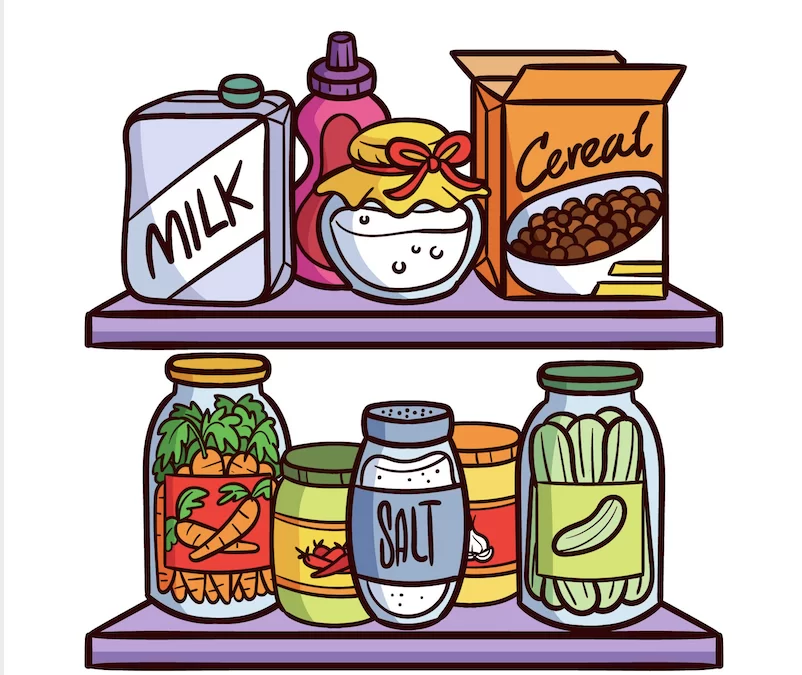Around 38 million people in the United States experience Food Insecurity, which is the state of limited access to nutritionally adequate food. It has been shown that Food Insecurity (FI) is more prevalent in patients with cardiovascular diseases (CVD), with research indicating increased risk of cardiovascular morbidity and mortality through behavioral and biological pathways. CVD is a leading cause of morbidity and mortality in the US, accounting for twenty percent of all deaths and affecting around nine percent of the US population. Because FI is associated with a major cause of death in the US (CVD), there must be interventions to reduce Food Insecurity in individuals.
Socioeconomic and environmental factors increase the risk of CVD through factors such as diet, blood glucose, cholesterol, and blood pressure. Data has shown that FI is greater among low-income households. 28.6 percent of households with incomes less than 185 percent of the poverty threshold experience FI, and 33.1 percent of households with incomes less than 130 percent of the poverty threshold experience FI. Furthermore, individuals with FI were shown to have 2.36 times higher odds of having a 10 year CVD risk greater than 20 percent compared to food secure individuals. Data from over three thousand US counties estimated an increase with the FI rate in the country to an increase in cardiovascular mortality Another survey of around 27,000 US adults presented similar findings with a 1.53-fold increased risk of cardiovascular mortality when compared to food-secure individuals. (Chang et al.)

Why this happens
There are several theories as to why this association exists. One is that in a food-insecure environment, individuals must maximize their calorie intake, and thus consume more foods high in refined carbohydrates, added fats, and sodium, which typically cost less than nutrient-rich foods. Studies have also shown that food insecurity increases the risk of diabetes and obesity, and these diseases are known risk factors for CVD.
There is also a bidirectional relationship between Food Insecurity and Cardiovascular Diseases. It is important to note that individuals with CVD could have a higher risk of FI due to the financial burden CVD care imposes. People with CVD and a risk of FI are frequently stuck in a cycle of both issues continuously exacerbating the other. Since these individuals are typically low-income, they do not have the resources to pay for medication. Often, their only options are to either allocate money for nutrient-rich food and thus have poor medication adherence, or they can buy cheaper nutrient-poor food in order to pay for medication. In both paths, only half of the problem is able to be treated.
Food-insecure individuals are also less likely to have access to adequate healthcare and medical treatment, and this relation is stronger for ethnic minorities and single mothers. Race and ethnicity play a role, as it is reported that food insecurity could pose a higher cardiovascular risk for racial and ethnic minorities. (Chang et al.) This is due to a combination of historical inequality and higher rates of clinical risk factors for cardiovascular disease. Because of practices such as redlining, Black and racial/ethnic minorities faced discrimination in housing, educational disparities, bias and discrimination in healthcare, and structural barriers, there are disproportionately higher rates of CVD in ethnic and racial minorities compared to NHW counterparts.
Solutions
In order to mediate this issue, healthcare systems and community organizations can screen and connect individuals with food and resources. Currently, FI screening is not standard medical practice and as a result, many individuals in need of targeted help are overlooked. Programs that connect FI individuals with aid programs have resulted in a positive association in cardiovascular health. To do this, Chang et al calls for intervention frameworks such as SEARCH to help along the screening process of FI patients. Furthermore, the federal government should emphasize funds towards aid programs that help FI such as SNAP (Supplemental Nutrition Assistance Program) and WIC (Special Supplemental Nutrition Program for Women, Infants, and Children). This would allow a greater number of people access to healthy food through subsidies they obtain from SNAP and WIC. Lastly, curriculum in medical school should be modified to include increased education on nutrition and ways to help patients after an FI screening. All in all, raising awareness about FI and its harmful impact on cardiovascular health is essential to the physical and mental well-being of individuals, especially low-income and minority demographics.
Petitions
https://www.feedingamerica.org/take-action
Bibliography
Chang, Ryan, et al. “Food Insecurity and Cardiovascular Disease: Current Trends and Future Directions.” American Journal of Preventive Cardiology, vol. 9, Mar. 2022, p. 100303, https://doi.org/10.1016/j.ajpc.2021.100303.
https://www.ncbi.nlm.nih.gov/pmc/articles/PMC8702994


